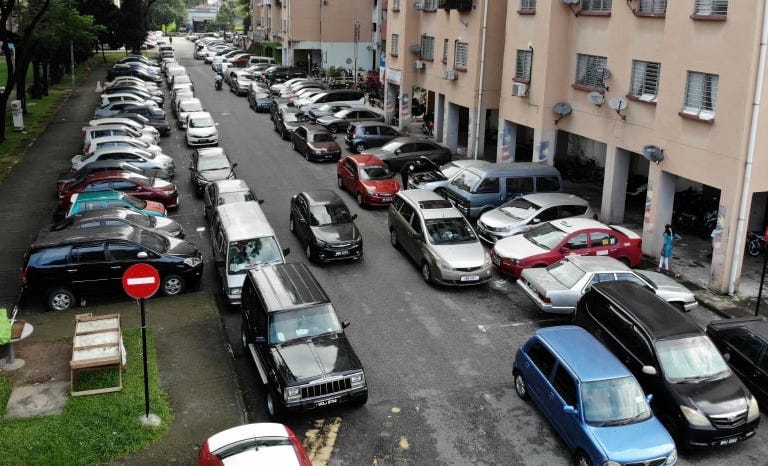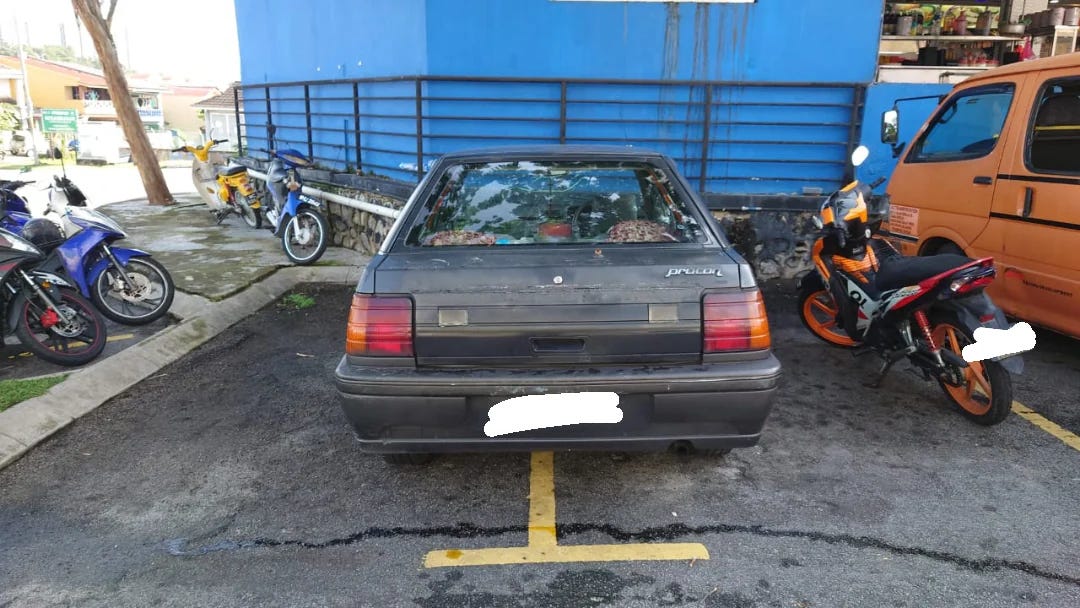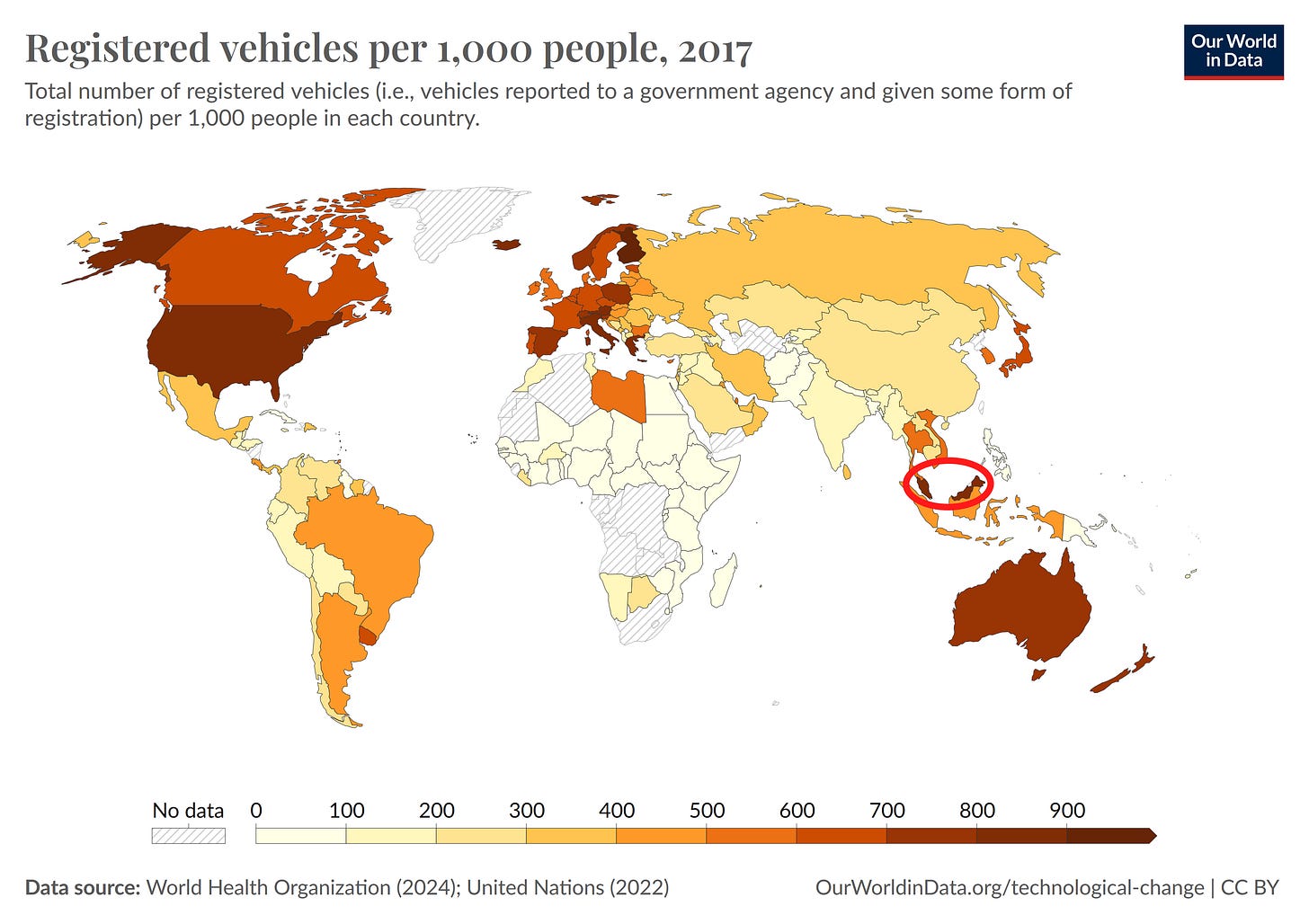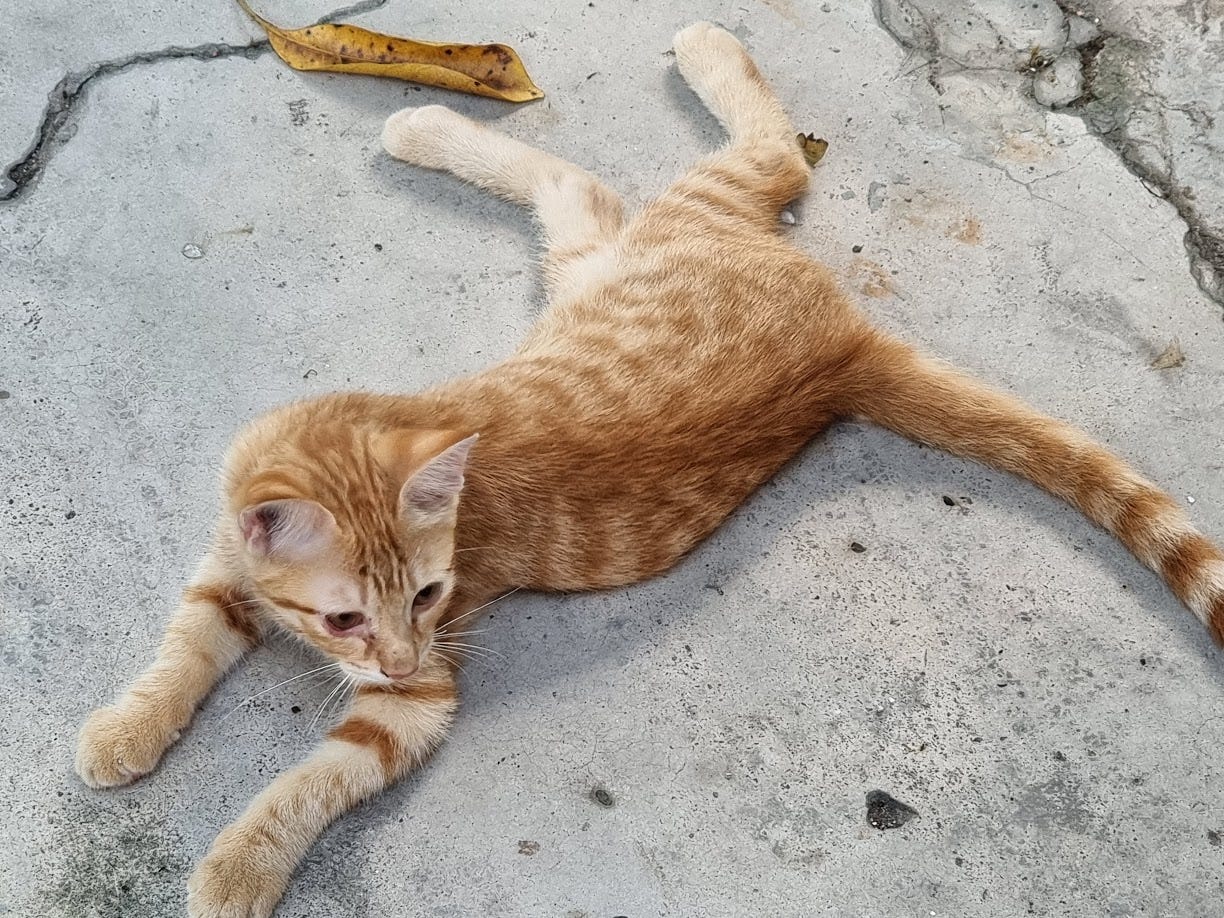The Oyen Conjecture
Malaysia’s cats and cars have the same problem: they sit where they shouldn’t
Orange is the color of insanity. - Vincent Van Gogh
I. Oyen cat behaviour
Orange Cat Behavior and Orange Cats Share One Brain Cell refers to the widespread notion and cliche that orange (ginger) cats are more chaotic, more affectionate and more stupid than other types of cats.
It’s become a meme that orange cats are characterized for their mischief and seemingly irrational behavior. These cats are harbingers of chaos.
Orange cat is the crackhead of cat. pic.twitter.com/3MCbjmA991
— Bulu Bulu Kehidupan 🇲🇾 (@ulat_bulu_bulu) November 16, 2019
In Malaysia, these cats are affectionately known as Oyen. They can be found anywhere and everywhere. They’ll fit in any nook and cranny. They’ll take up spots where they shouldn’t. Even preferring anything other than their own dedicated spaces.
There’s cats that have taken trains.
There’s even Oyen in Zoo Negara that has taken up residence among the capybaras. How did it get there???
Oyen’s charm is in their ability to fit into any space, no matter how absurd. A suitcase? A kitchen sink? No problem. But they are oh-so adorable, it’s why we tolerate them at all.
II. The Oyen Conjecture: if if fits, it sits.
Unfortunately, it’s not just cats in Malaysia who have this talent for squeezing into inappropriate places.
This is the Oyen Conjecture: if a car fits, it sits. Wherever space exists, cars will fill it, regardless of whether it's practical or legal.
This phenomenon is seen throughout the country, these cars are taking up space that defies common sense.
When Oyen squeezes into a small space, it’s cute. When cars do it… not so much. The inconvenience caused by cars is a massive migraine to deal with.
III. Oyen man bad ?!?!
The Oyen Conjecture is endemic to transportation in Malaysia. It is, shamefully, a part of the culture.
Double parking is rampant everywhere. Causing traffic congestion, and blocking public access
In retail areas and shops, these cars can be found to block pedestrian crossings, emergency lanes, and fire hydrants.
I mean, emergency services can’t even get their job done.
There’s no excuse for it. Like Oyen, without a care to their actions, some people just lack that consideration. 🤬
Even residential areas and suburbs aren’t spared. Cars clogging up roads, making two-way streets barely wide enough for even one car. It makes driving feel like you’re walking on a tightrope.
Look at this apartment complex, see how crazy this is?

They don't have to pave paradise, because the whole country is a parking lot.
IV. The Cat Distribution System
Malaysia has a car problem. I think there’s some weird economics going on. Because, there’s just way too many cars given the relative size of the population.
There’s 869 vehicles registered per 1,000 people in Malaysia. More than their neighbours Singapore (167), Indonesia (485) and Thailand (527). We’re on par with the Americans (863).
According to the Ministry of Transport, in 2023, there’s about 17.2 million cars and 16.8 million motorcycles registered. That’s 34 million private vehicles.
The population of Malaysia, as of 2024 currently stands at 34 million. Not everyone in the population can drive or ride.
Why is that?
First, Malaysia’s climate discourages walking. You’re either drenched with sweat from the heat, or you’re soaked from the rain. Sometimes both on the same day, with nothing in between. Who likes that? No one. Which is why we much rather be in a car and crank up the AC.
Second, even if people did consider walking, there are just not enough pedestrian-friendly routes. There’s all sorts of issues: It’s poorly maintained. It’s too narrow. It might not even exist. Locals and Tourists have complained about this.
Third, the public infrastructure. Even as bad as the car situation is, the alternative isn’t much better. It’s not that easy to get around. Most people who work in Kuala Lumpur, do not live in Kuala Lumpur.
Although, efforts have been made and are still being made by the government to build more connections. But there still remains the first and last mile issue. It’s still too far for commuters to walk to the stations, or access to those stations are still difficult. Forcing many to still rely on private transportation to get to the train station. Guess what? they still need to park their car too.
If there are no better alternatives to cars, there’s no point in switching.
Development in the country is still rather car-centric. Plus the cost of owning a car in the country is rather cheap compared to the rest of the region.
There’s too many cars, and not enough space. Building additional parking lots is only papering over the problem, but it is not getting to the root causes of the issue.
Additionally, there are also problems with governance and institutions.
Enforcement is lax. It’s not that there isn’t enforcement. It just doesn’t feel like enforcement. Here’s what I mean: the road authority gives out discounts to parking and traffic fines. It’s like a holiday sale. Instead of discouraging you from reckless parking, you can rack up the fines and wait for the discounts. Unless that changes, don’t expect anything else to change either.
There will always be discounts. Just don't pay and wait for announcements. This is the Malaysian way. - comment #19 from Lowyat.net Forum
Furthermore, within the government, there’s poor policy decisions. Subsidies for fuel that still make purchasing cars a less costly option. Toll concessionaires, by agreement with the government, stop toll prices from hiking. They incentivize car use. Paradoxically ensuring that we still pay to sit in congested traffic. 😑
Yes, the People are aware of the problems, and have voiced their concerns. In response, the government has proposed to tackle the problems. Many times over. But right now, it feels like wishful thinking.
V. in the Oyen, the trouble you make is greater than the space you take
The Oyen Conjecture isn’t going anywhere anytime soon. Like stray cats breeding uncontrollably, Malaysia’s car problem isn’t getting better.
While culture is not an easy thing to change, nor can change happen soon enough. Good institutions and policies (and some much needed leadership) is a start.
Cities in other parts of the world, like Amsterdam and Barcelona have successfully reduced car dependency. Transforming cities into car-free zones and building pedestrian-friendly infrastructure. They show that it is possible to cut down on cars.
Heck, even Uber—a company whose revenues depend on cars—is trialing ways to cut car use, with their One Less Car programs in Australia.
It can be done. So what’s stopping us?
Inspirations
Car culture in Malaysia: A silent crisis
The Centre—Getting Around: Towards a decent daily commute
Paved Paradise by Henry Grabar
Only found out about this as I was finishing this post and read several excerpts. Getting my copy soon. h/t to Kyla Scanlon on the Conversations with Tyler podcast.








